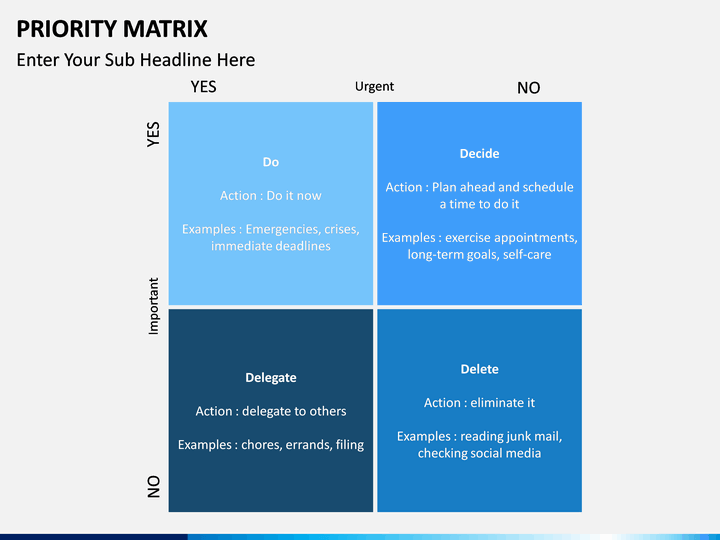
#Marketing priority matrix software
The enterprise software company I work at has a large, global customer base. And of course, the virtual “decibel factor” of hundreds of customers requesting particular functionality is much louder than the noisy few.īefore I describe the process, there is one caveat. In addition, many customers love PEP because it gives them a clear voice into product direction, and clear visibility into why and when enhancements will be delivered. Not only has PEP helped us make better decisions about what we will, and will not, add to our products, but the gathered data is used by groups in the company well beyond Product Management, including Marketing and Technical Support, to improve their knowledge of customer needs and problems. It also translates well across languages-an important point as you will see later. OK, I agree, it could have a fancier name like “CustomerPulse” or “ProductVision,” but PEP is simple, easy to remember, and to-the-point. We call it PEP, short for Product Enhancement Process. Over the past three years at my company, we have worked to develop a process that delivers exactly that statistically-valid broad-based customer data described earlier.
#Marketing priority matrix how to
The question is how to create a scalable, repeatable and efficient process for getting the analytic data to support feature prioritization. The problem is that without good analytic information, it is very difficult for product managers to defend any given prioritization, and whatever work the product manager has done can be pushed aside to make way for other deciding factors (like soothing loud and annoying customers). This could be a very loud customer demanding an enhancement be made, or a loud salesperson complaining that a big deal is possible if only certain features are added, or a loud development manager refusing to add something because it is not a good use of the engineers’ time. Along with this information though, a lot of what is prioritized is based on the “decibel factor” of various parties involved in the process. In most companies, feature prioritization does have a basis in customer needs and requirements, but this information is typically collected rather anecdotally from a small number of customers and then extrapolated to apply across the larger customer base. What do I mean by a metrics-driven approach? It is an approach that relies heavily on statistically-valid samples of broad-based customer data that is used to understand customer needs and prioritize product enhancements.

As a product manager, one of the things I rarely see in any software company is a true metrics-driven approach to product planning and enhancement prioritization.


 0 kommentar(er)
0 kommentar(er)
